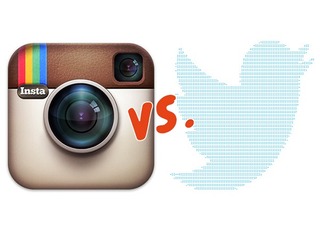Two Chairs raises $72M to match patients to the right mental health provider
This is the company's first fundraising since 2019 and brings its total capital to $103M
Read more...
(Updated to reflect comment from Stipple)
Image-based commerce and advertising company Stipple has raised $3 million in funding from Sands Capital, it was announced Thursday.
Stipple had previously raised a $2 million seed round and a $5 million Series A, bringing it’s total fundraising to $10 million. Stipple’s investors include Sands Capital, Kleiner Perkins Caufield & Byers (KPCB), Floodgate, Relevance Capital, Justin Timberlake, and other leading companies and angel investors.
In an interview with VatorNews.Rey Flemings, founder and CEO of Stipple, said that the new money will be used to build up Stipple's capabilites. Flemings says that there is a blacklog of hundreds of customers trying to get their images onto Stipple. In order to meet demand, the company will be hiring four or five engineers.
The money will also be used to "significantly scale the creation of consumer images for brands," which means tagging products inside photos that will allow people to buy them.
In addition to the new funding, Stipple is also announcing that it has hired two new executives. Darr Gerscovich, who previously worked at LinkedIn and Yahoo, has been hired to run Stipple’s marketing organization, while Stephanie Palmer, formerly of Luminate and Meebo, will head up distribution working directly with Stipple network of publishers.
What does Stipple do?
San Franisco-based Stipple, which was founded in 2010, gives users greater control over what happens to photos they put online. Instead of having photos copied and pasted all over the Internet without credit, Stipple allows users to tag their photos so they know where they are being used across the Web, and to see how many times they have been viewed.
The company’s patent-pending technology will permanently connect images across the Web to their original owners, thereby enabling real-time distribution of the images. Publishers on Stipple’s network, as well as developers using its API, can earn advertising revenue as their audiences interact with photos that have been “Stipple’d.”
What makes Stipple different from other similar services, Flemings said, is that they all require tagging to be done manually, while Stipple does it automatically.
Nike, for example, has two and a half million images that need to be tagged, so there is no way that they could do each one individually. Stipple will recognize the productt in the photo and put that tag on it. The company gets over a billion tag requests for photos every month.
Other similar services also require manual distribution, meaning that every time a photo goes onto a new website, it requires a code to be tagged. With Stipple's photos, they are automatically fingerprinted and don't require the extra step, Flemings said.
The company’s current image tagging rate is over one million images per day. Some of the world’s leading merchants use Stipple to control their content, including Nike, L’Oreal, Zappos, and Nordstrom. These companies are using Stipple to tag tens of millions of their images per month. Stipple lets merchants knows which images are most popular and how many times they have been viewed. Stipple has 200 merchants using the service to sell their products.
Stipple tagged 12 million images in November, and in December the company is projected to tag over 80 million images. By the end of the year, Stipple expects that it will have over 100 million accurately tagged and monetize-able images.
The answer to the photo wars?
Stipple’s recently integrated with Twitter Cards, allowing users to add YouTube video tags, shoppable product tags, so that each image "becomes a micro-storefront driving more sales," and people tags, which allow each tweeted image to becomes a "billboard for you to gain followers."
As many of you probably know, Instagram just took the opposite step by completely removing its photos from showing up in tweets at all.
Instagram would not have to had to do this, Flemings said, if they had a service like Stipple, which would have allowed them to monetize their photos.
While most of the photos on Instagram are taken by the average person, and don't have much potential to be monetized, there are plenty of brands on the service too, with people following, liking and commenting on their photos. Indeed, a study from business data analytics company Simply Measured in November found that 54% of the world's top 100 brands are now on Instagram.
But Instagram was forced to take its photos off Twitter in order to monetize them, a move that Flemings called, "dangerous" and "antithetical to the reason photos exist."
Photos taken on Instagram can't simply live on Instagram, he said. That is the nature of the Web. With a service like Stipple, it would not have had to worry about making money off of its photos.
Watch the video below to get a better idea of what Stipple does:
This is the company's first fundraising since 2019 and brings its total capital to $103M
Read more...ROOK lets health, fitness, and wellness companies take data from devices and make it actionable
Read more...The EU approved the European Health Data Space, making it easier to exchange and access health data
Read more...
Joined Vator on



